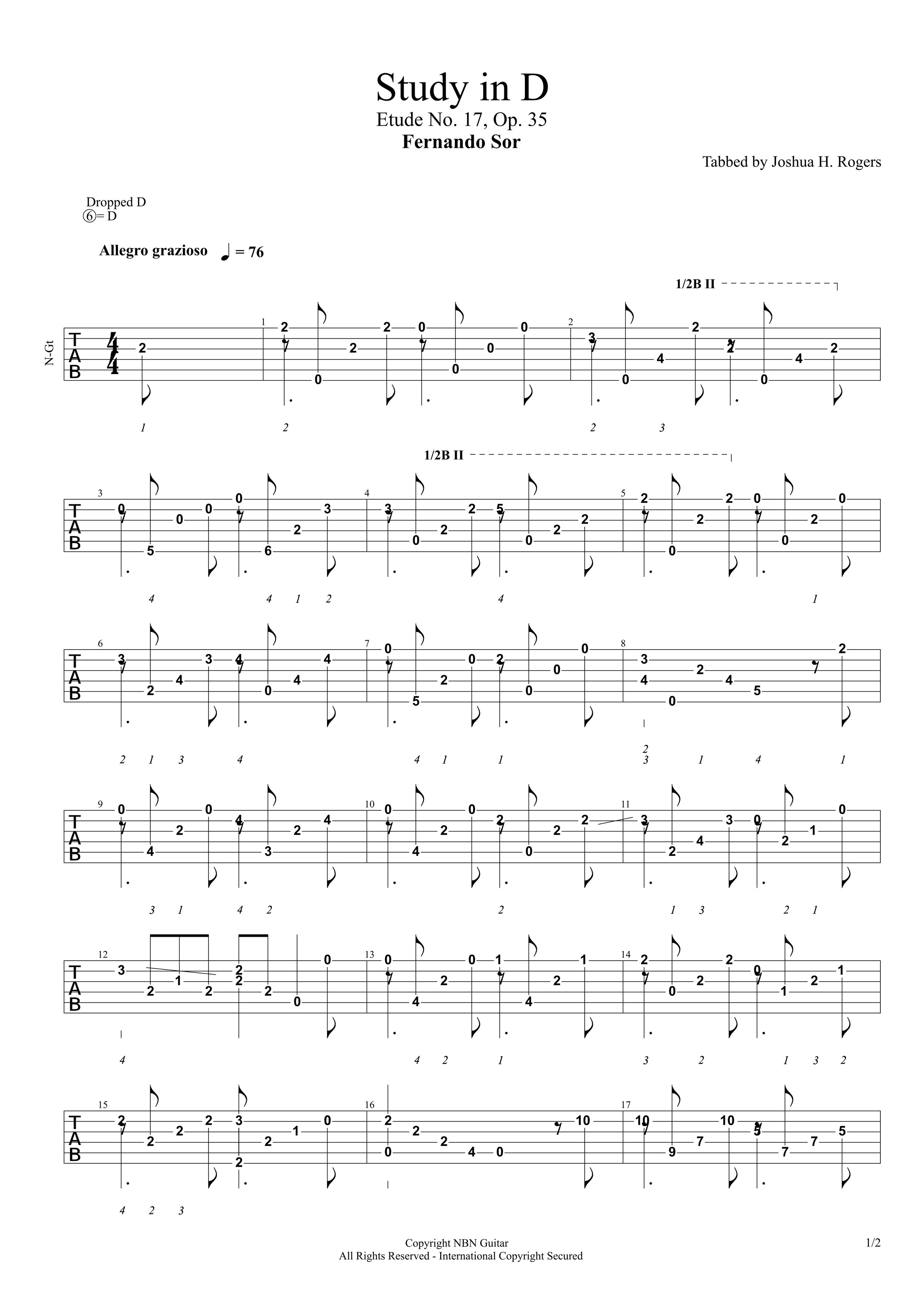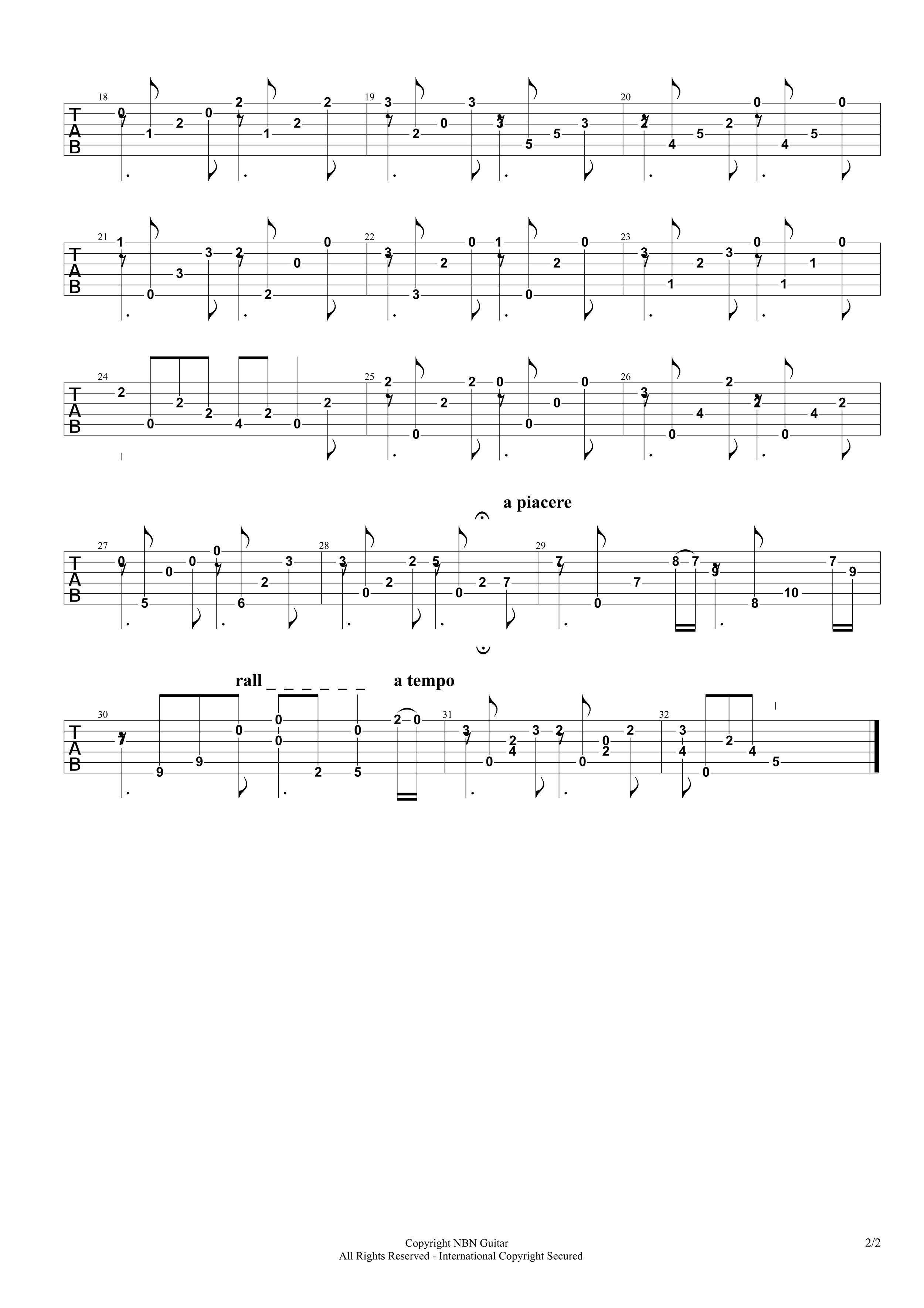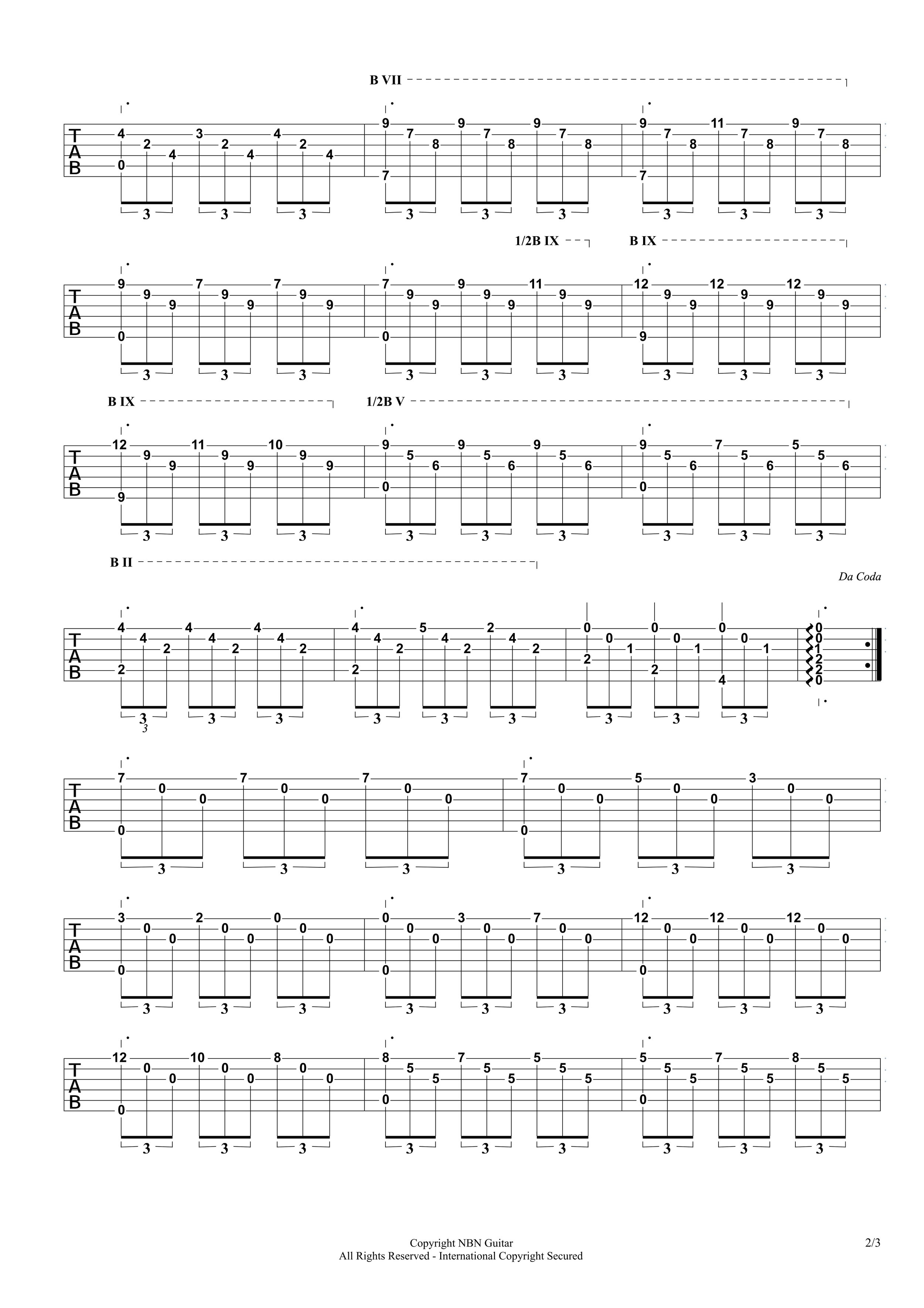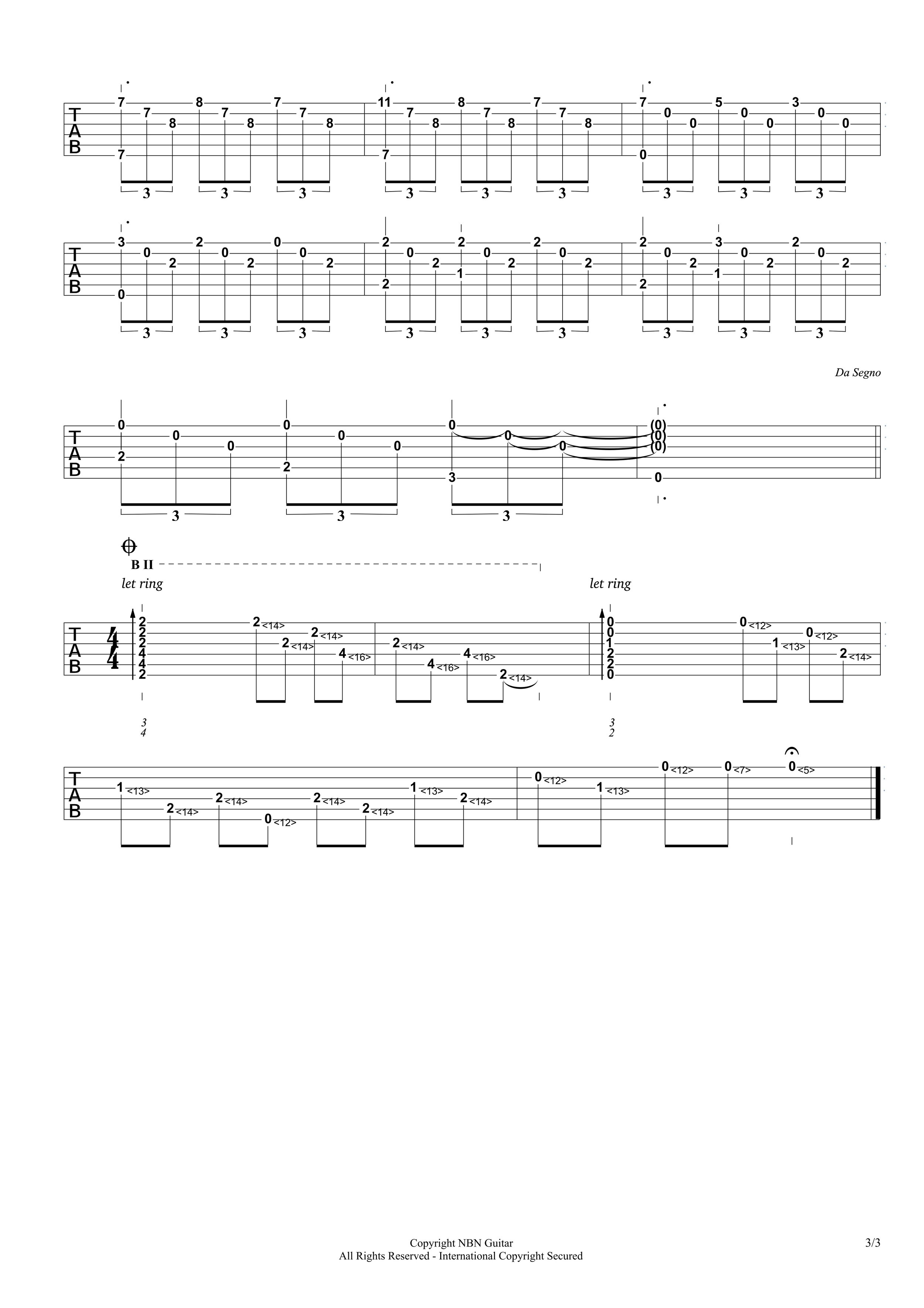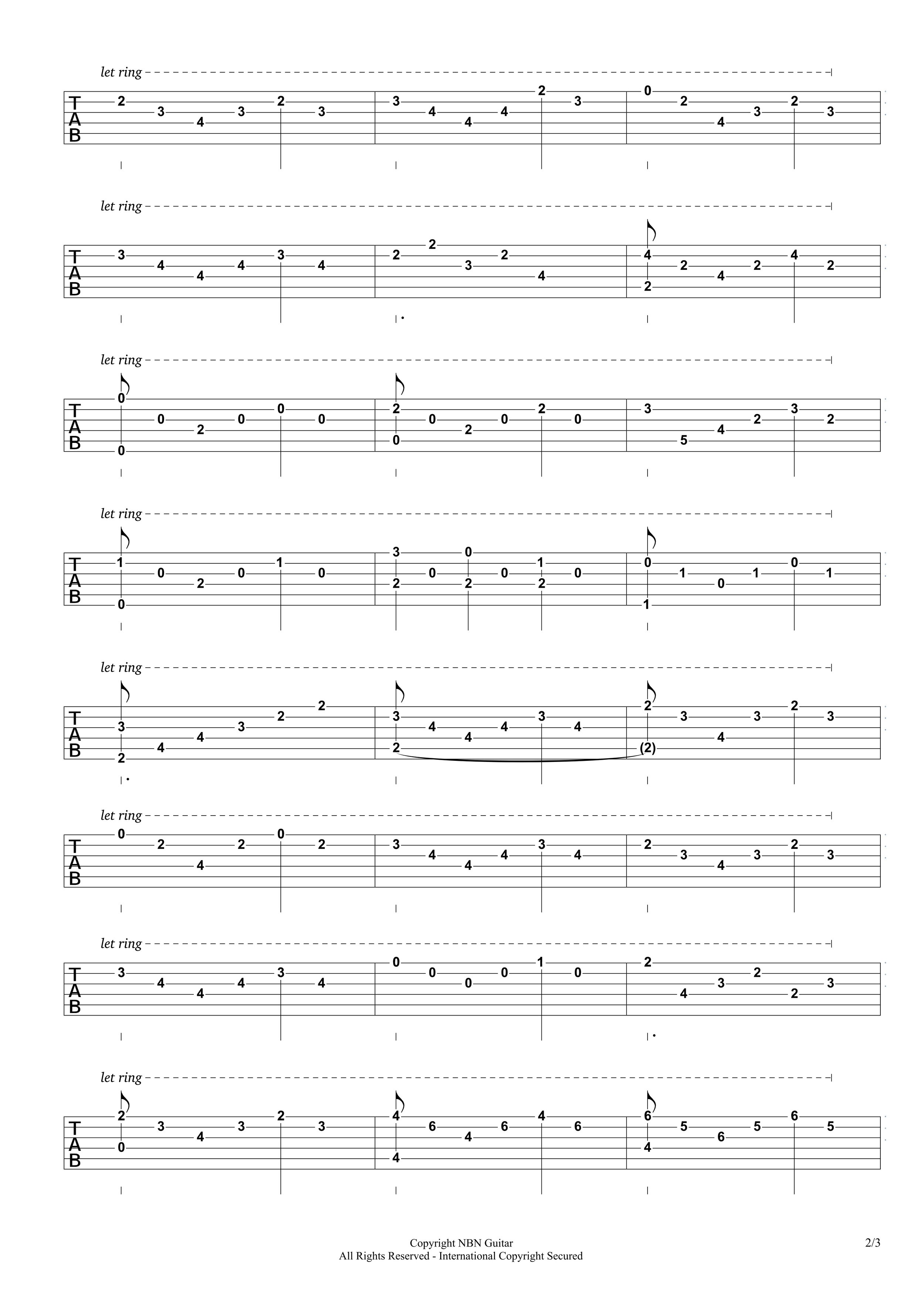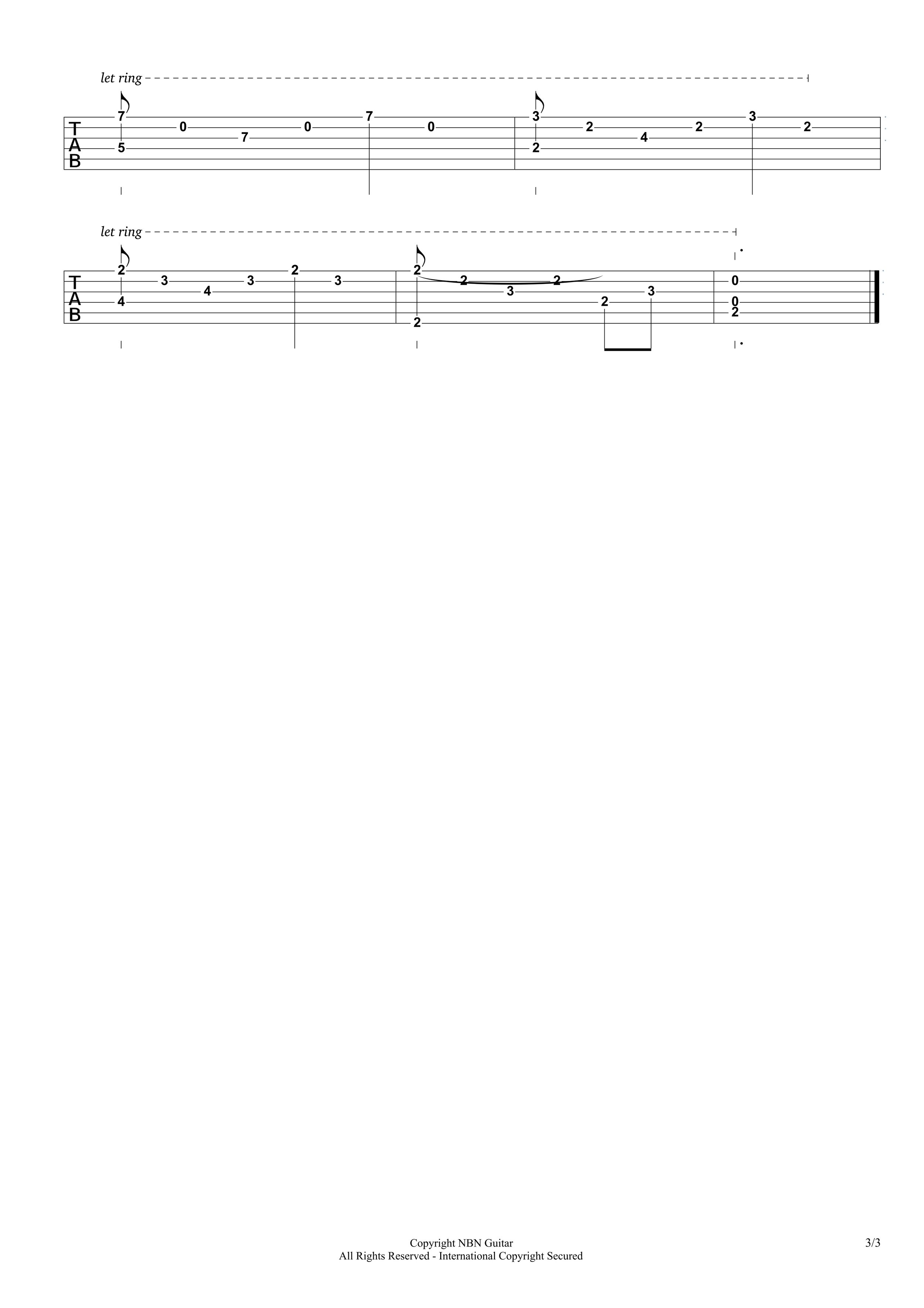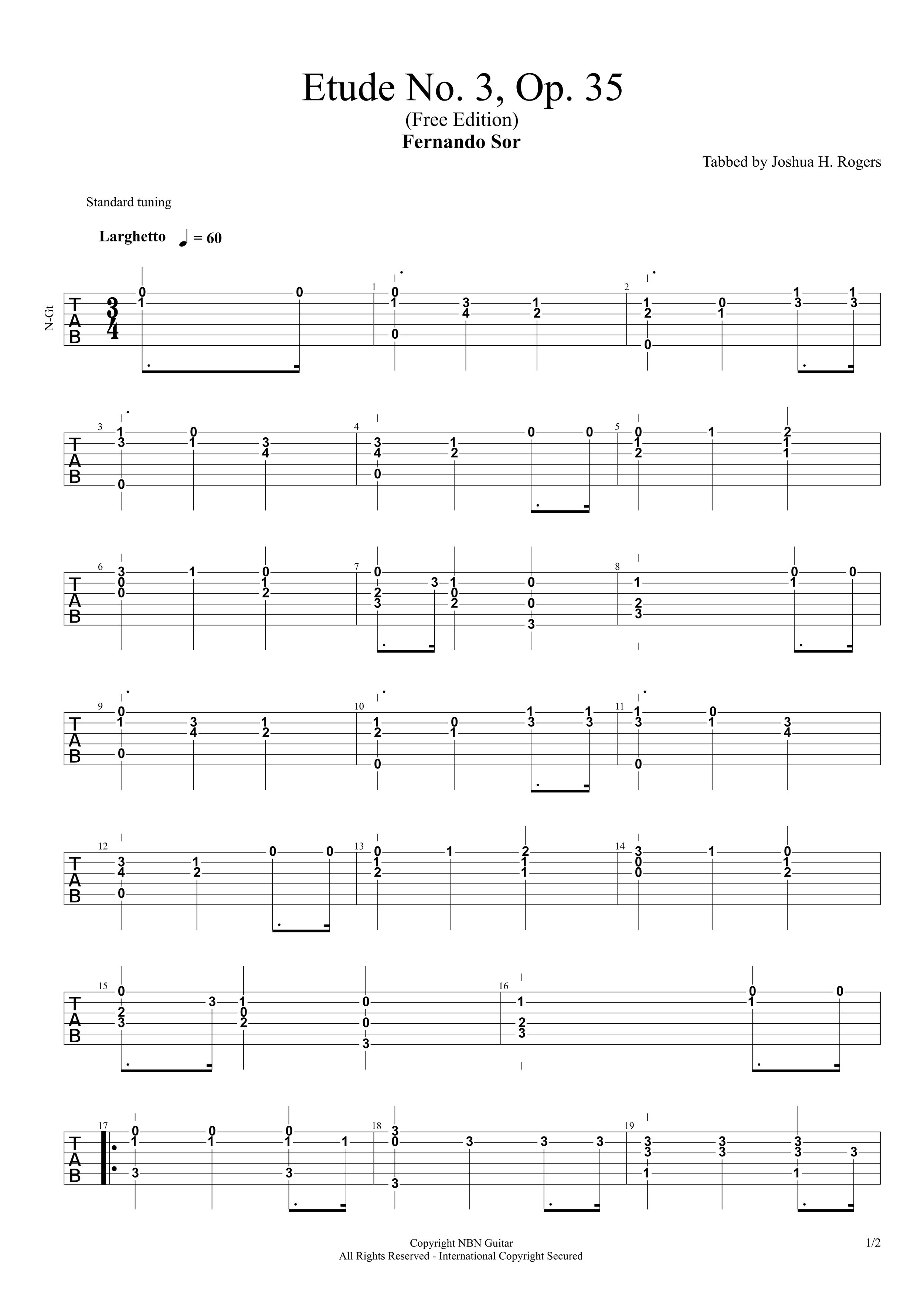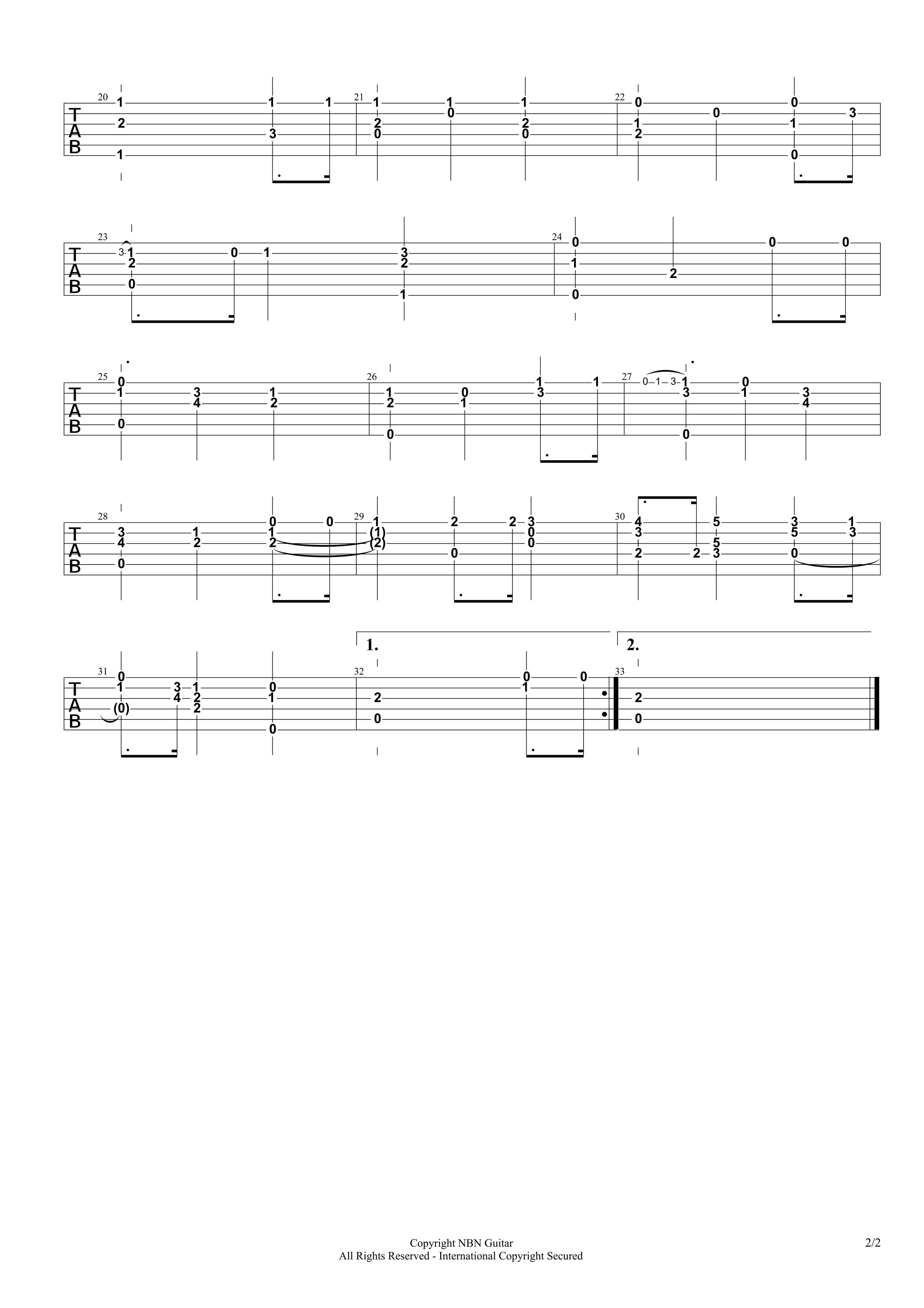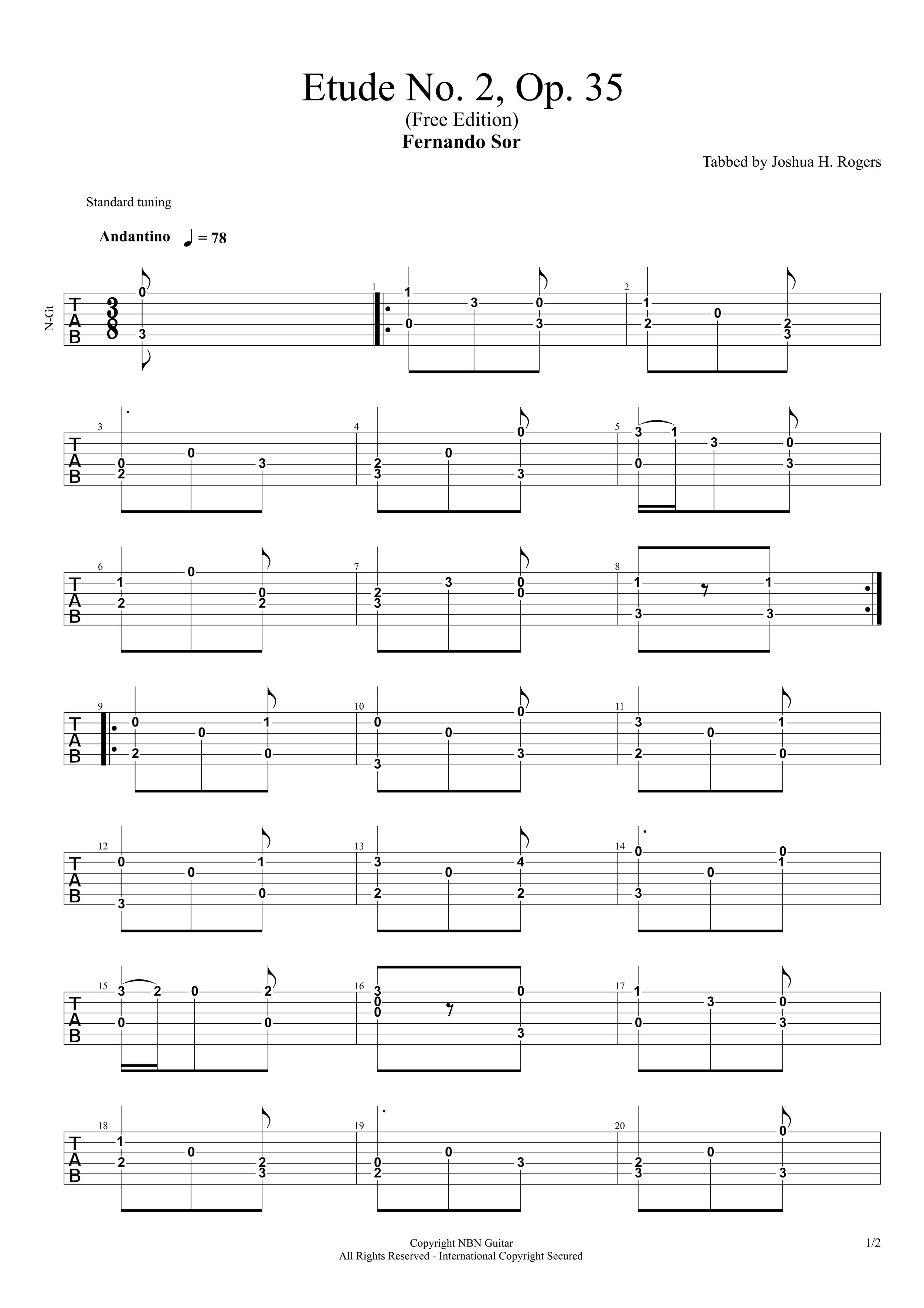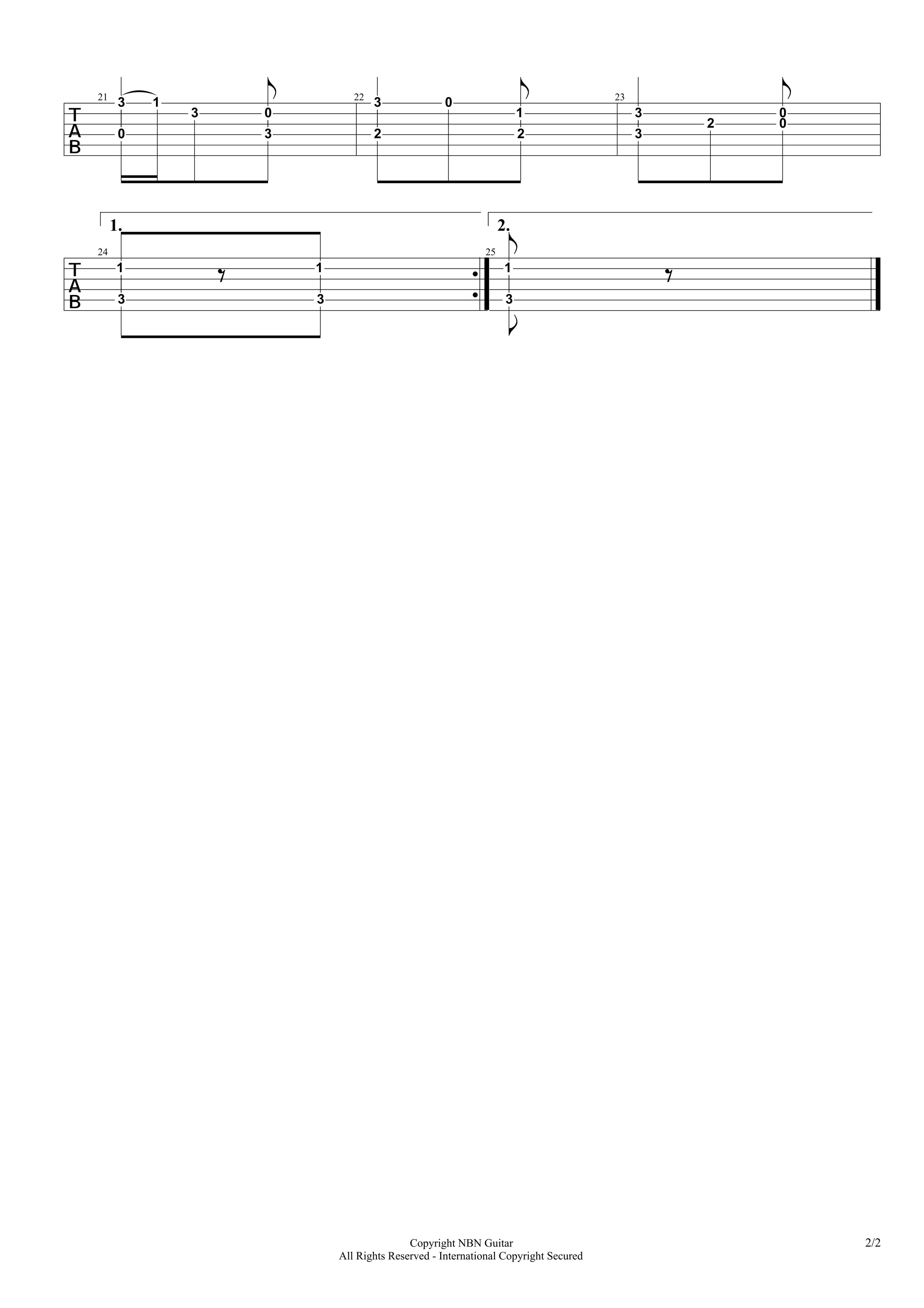Study in D - Basic Membership
Introduction
Fernando Sor left a vast legacy of classical guitar pieces for us to enjoy and savour in modern times. Amongst his many compositions are etudes or studies whose purpose is to help with overcoming some technical challenge upon this most beautiful of instruments. The Study in D or Etude No. 17, Op. 35 has several challenges that can be tackled if one knows what to look for. His other very well-known and loved guitar etude is the famous 'Study in B minor'.
Tips
- Drop D tuning (6th string down one tone to D)
- Anacrusis with accents falling upon beat 4+ & 1; 2+ & 3
- Sequential planting in the left hand
- Stretch with the left hand bars 3 & 27
- Rubato bar 29 - 31
- Vibrato bar 32
Let your fingers fly!
Spanish Romance - Basic Membership
Introduction
Spanish Romance is without a doubt one of the most iconic pieces in the classical guitar repertoire. Its history has been speckled with conjecture as to who actually wrote that piece.
At various times it has been attributed to Antonio Rubira, David del Castillo,[1] Francisco Tárrega, Fernando Sor, Daniel Fortea, Miguel Llobet, Antonio Cano, Vicente Gómez and Narciso Yepes! (sourced from Wikipedia).I think it's easier just for it to remain anonymous! From a compositional point of view the piece is in Binary form starting out in E-minor and then modulate to the tonic major.
Tips
Technically speaking the piece is not too difficult yet is a beautifully written piece with an unforgettable melody. A single pattern in the right hand is used throughout the piece and with the exception of a couple of difficult stretches in the B section the piece is not overly challenging for the left hand either. My first guitar teacher taught me a couple of variations which I have included in this transcription.
- The first is a slightly different series of bass notes at the end of the A section.
- The second is a coda that incorporates a series of artificial harmonics played over a F#-minor chord followed by an E-major chord. Finally culminating in 3 artificial harmonics on the 1st string pitched at one octave, then an octave+5th, then 2 octaves.
Let your fingers fly!
Study in B minor, Op. 35 - Basic Membership
Introduction
Study in B-minor by Fernando Sor is a beautiful piece written during the 19th century. This guitar lesson will show you exactly how to play the Study in B-minor note-by-note.
In this lesson I'll show you how to take advantage of pivot and guide fingers for the left hand, and I also offer several different picking suggestions for the right hand.
Let your fingers fly!
Etude No. 3, Op. 35 - Basic Membership
Introduction
This etude (study) belongs to Fernando Sor's '12 Studies for Guitar, Op. 35'. Whilst Sor's more famous pieces take the limelight it is important to remember his significant contribution to the development of guitar technique. The Spanish guitarist/composer is probably most well-known for his 'Variations on a Theme of Mozart'. Sor was widely traveled and lived in Paris, London, Moscow and toured Europe extensively before spending his final years in Paris.
Tips
This brilliant little etude from Fernando Sor will help the aspiring guitarist develop several important theoretical and technical points:
Points to note for Etude No. 3:
- Starting a piece with an anacrusis (upbeat)
- Playing in A-minor
- Understanding the tempo indication Larghetto and its BPM
- Recognising the accidentals F# & G#
- Treating two or more right-hand fingers as a single finger
- Playing block chords and avoiding 'rolling' the fingers of the right-hand i.e. no arpeggiato
Let your fingers fly!
Etude No. 2, Op. 35 - Basic Membership
Introduction
This etude (study) belongs to Fernando Sor's '12 Studies for Guitar, Op. 35'. Whilst Sor's more famous pieces take the limelight it is important to remember his significant contribution to the development of guitar technique. The Spanish guitarist/composer is probably most well-known for his 'Variations on a Theme of Mozart'. Sor was widely traveled and lived in Paris, London, Moscow and toured Europe extensively before spending his final years in Paris.
This brilliant little etude from Fernando Sor will help the aspiring guitarist develop several important theoretical and technical points:
Tips
- Starting a piece with an anacrusis (upbeat)
- Playing in C major
- Understanding the tempo indication Andantino and its BPM
- Recognising the accidentals D# & F#
- Using the same right-hand finger several times in succession
Let your fingers fly!

